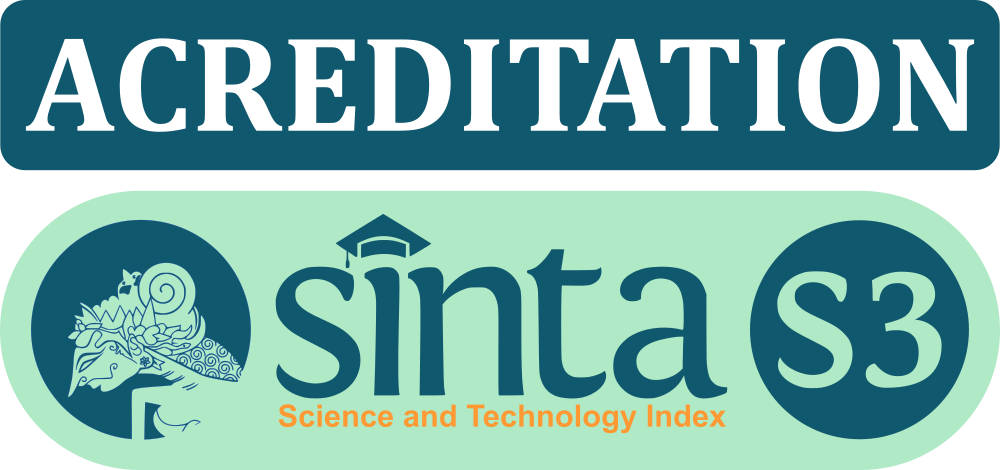Model of Transportation Mode Choice from Transjakarta to MRT Phase II (Case Study : Transjakarta Corridor I Blok M-Kota)
DOI:
https://doi.org/10.29122/mipi.v15i3.5019Keywords:
Transjakarta, MRT phase II, Stated preference, logit binomial, difference methodAbstract
Transjakarta Corridor 1 (TJ K1) is the corridor with the highest number of passengers among all Transjakarta corridors, where the total passengers reached 2,686,458 people by December 2019. Increasing of passengers affected decreasing performance of TJ K1, especially in load factor parameter 284.615% with total passengers of 111 people in one trip. Therefore, alternative mode is needed to improve performance of TJ K1. The purpose of this research is to know the modelling choice of mode and the probability of TJ K1 users to the MRT. The variables used are time different (TD) and cost different (CD) between TJ K1 and MRT for Blok M-Kota route. This study uses Stated Preference (SP) technique and analysis of the modal choice model with the Logit Binomial Difference Method. The results analysis the probability of switching users from Transjakarta to MRT will tend to shift when experiencing a change, which costs Rp. 7,500 more expensive than the initial Transjakarta fare with a percentage of displacement of 33.36% with the option of 20 minutes faster, 57.07% with the option of 30 minutes faster, and 77.94% with the option of 40 minutes faster time difference between Transjakarta and MRT with coefficient of determination (R2) of 0.5025, which mean 50.25% was influenced by variables studied.
Keywords: transjakarta; MRT phase II; stated preference; logit binomial, difference method
References
H. Widyastuti, A. Utami, and Z. M. Dzulfiqar, “Model of queuing in the railway level crossing (case study: Imam Bonjol railway level crossing in Blitar),” IOP Conf. Ser. Mater. Sci. Eng., vol. 650, no. 1, 2019, doi: 10.1088/1757-899X/650/1/012053.
H. Widyastuti et al., “Railway Infrastructure to Support Inter-modal Transportation from Port to Hinterland (Case Study-Manyar Port),” Procedia - Soc. Behav. Sci., vol. 227, no. November 2015, pp. 181–185, 2016, doi: 10.1016/j.sbspro.2016.06.060.
A. Utami and H. Widyastuti, “STUDY OF SOCIETY BEHAVIOUR TO EARLY WARNING IN THE RAILWAY LEVEL CROSSING WITHOUT BARRIER IN GAYUNG KEBONSARI , SURABAYA STUDI PERILAKU MASYARAKAT TERHADAP EARLY WARNING PADA PERLINTASAN SEBIDANG TANPA PALANG PINTU DI,” M.I.P.I, vol. 14, no. 1, pp. 39–46, 2020, doi: https://doi.org/10.29122/mipi.v14i1.
A. Utami and K. Rubin, “Analisis Perbandingan Waktu Perjalanan dan Biaya antara Kendaraan Pribadi dan Transjakarta menggunakan Metode PCI ( Studi Kasus?: TJ Koridor IX Pinang Ranti-Pluit ),” Reka Buana : Jurnal Ilmiah Teknik Sipil dan Teknik Kimia vol. 6, no. 2, pp. 150–159, 2021.
N. Zeng and Z. Wang, “Analysis of Beijing-guangzhou high-speed railway competitiveness based on generalized travel cost model,” IOP Conf. Ser. Earth Environ. Sci., vol. 587, no. 1, 2020, doi: 10.1088/1755-1315/587/1/012099.
C. Fourie and B. Lubbe, “Determinants of selection of full-service airlines and low-cost carriers - A note on business travellers in South Africa,” J. Air Transp. Manag., vol. 12, no. 2, pp. 98–102, 2006, doi: 10.1016/j.jairtraman.2005.11.008.
D. N. Wulansari, “Kompetisi Pemilihan Moda Angkutan Penumpang Berdasarkan Model Logit-Binomial-Selisih dan Logit-Binomial-Nisbah,” J. Fropil, vol. 4, no. 1, pp. 15–27, 2016.
F. Nurhasanah, “ANALISIS PERPINDAHAN MODA PENGGUNA TRANSJAKARTA TERHADAP MODA MRT FASE II (STUDI KASUS TRANSJAKARTA KORIDOR 1),” Tugas Akhir Universitas Pertamina, 2021.
A. Nurhidayat, D. Utomo, R. Fajar, Sucipto, and H. Widyastuti, “Aircraft and High Speed Train Using the Logit Model A Case Study of The Jakarta-Surabaya Route,” vol. 186, no. Apte 2018, pp. 86–91, 2019, doi: 10.2991/apte-18.2019.16.
A. Soimun and H. Widyastuti, “Analisis Probabilitas Perpindahan Moda Pengguna Sepeda Motor ke Kereta Commuter Surabaya Porong,” J. Penelit. Transp. Darat, vol. 22, no. 1, pp. 47–56, 2020, doi: 10.25104/jptd.v22i1.1599.
M. F. Nurdiansyah and H. Widyastuti, “Analisis Probabilitas Perpindahan Moda dari Bus ke Kereta Api Siliwangi Jurusan Sukabumi-Cianjur Menggunakan Analisis Regresi Logit Biner,” J. Tek. ITS, vol. 4, no. 1, pp. 22–25, 2015.
A. Y. Nurhidayat, H. Widyastuti, and D. P. Utomo, “Model of transportation mode choice between aircraft and high speed train of Jakarta-Surabaya route,” IOP Conf. Ser. Earth Environ. Sci., vol. 202, no. 1, 2018, doi: 10.1088/1755-1315/202/1/012002.
A. Pramudita and H. Widyastuti, “Studi Pemilihan Moda Kereta Api Eksekutif Dan Kereta Api Semi Cepat Rute Jakarta-Surabaya Menggunakan Teknik Stated Preference,” J. Apl. Tek. Sipil, vol. 18, no. 2, pp. 165–170, 2020, doi: 10.12962/j2579-891X.v18i2.7395.
R. S. S. Tuhepaly and H. Widyastuti, “Analisis Probabilitas Pemilihan Moda Pesawat Terbang dan Kapal Laut pada Rute Fakfak – Sorong dengan Metode Revealed Preference,” J. Apl. Tek. Sipil, vol. 17, no. 1, p. 13, 2019, doi: 10.12962/j2579-891x.v17i1.4694.
H. Widyastuti, A. Utami, and M. Putra, “Model of Queuing in the Railway Level Crossings (Case Study: Railway Level Crossings in Jemursari Surabaya),” in Atlantis Press, 2019, vol. 186, no. Apte 2018, pp. 225–232, doi: 10.2991/apte-18.2019.41.
S. N. Rahmatunnisa, A. Utami, and A. Y. Nurhidayat, “Probabilitas Perpindahan Penumpang Transportasi Massal Berbasis Rel (Studi Kasus Kereta Api Argo Parahyangan Terhadap Kereta Cepat Jakarta – Bandung),” Ge-STRAM: Jurnal Perencanaan Dan Rekayasa Sipil, vol. 04, no. September, pp. 91–96, 2021.
Downloads
Published
How to Cite
Issue
Section
License

This work is licensed under a Creative Commons Attribution-ShareAlike 4.0 International License.
Open Access Policy
MIPI provides immediate open access to its content on the principle that making research freely available to the public supports a greater global exchange of knowledge.
MIPI by BRIN is licensed under a Creative Commons Attribution-NonCommercial-ShareAlike 4.0 International License. Permissions beyond the scope of this license may be available at http://ejurnal.bppt.go.id/index.php/MIPI


















